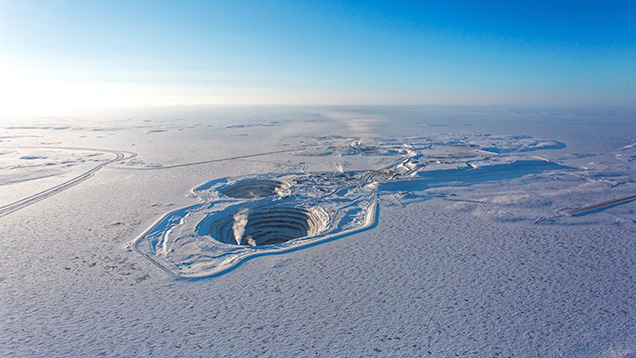Can the Arctic be a significant contributor of critical minerals for the global energy transition?

The demand for critical minerals is rising to support the low-carbon energy transition, as well as global economic growth. Despite its hostile environment, the Arctic is region with historic and existing mineral production. This paper assesses the potential of the Arctic to make a significant contribution to the future supply of critical minerals. It is one of the first, possibly the first, attempt to do so at a pan-Arctic scale and with a focus on critical minerals for the energy transition.
The mineral geology of the Arctic is not special. The particularities are the various physical and human geographic factors that render the costs and timelines for mineral extraction in the Arctic greater than in many other parts of the world.
The Arctic today accounts for more than 10% of global production for only three critical minerals: platinum, palladium and nickel. Other critical minerals produced in the Arctic in smaller quantities include silver, copper and cobalt. The Arctic also makes a significant contribution to global supplies of byproducts such as tellurium and selenium.
Most new production that comes online between now and 2034 is likely to be from mineral reserves that are already proven, or from areas adjacent to existing known deposits. Given the scale of its current mining operations in the Arctic and its need to boost mineral production and exports, it is possible that the major growth of production between now and 2034 will be in Russia. Exploration and feasibility studies in the Arctic regions of other countries will certainly identify new reserves and potential mining operations. However, it is likely that few of these will add significantly to the Arctic’s share of the global supply of critical minerals in the next ten years. That being said, they may start to provide additional sources of supply of critical mineral ores for western Europe and North America.
The period beyond 2034 is when the Arctic regions could possibly start to provide a greater share of global supplies of critical minerals. The speed at which this takes place will depend on factors such as the rate of growth of demand for different critical minerals, the economic competitiveness of critical mineral supplies from Arctic regions compared to those from the rest of the world and the scale of government and societal support. The exact locations of the mines will vary between minerals, but Russia and Canada are likely to feature strongly for several minerals on account of heir geographic size. Other countries may become regionally important suppliers for specific minerals, for example Greenland and Sweden for rare earths. Sub-sea exploitation is likely to have started as well.
In summary, the Arctic is unlikely to make a significant contribution to the future global supply of critical minerals. However, national and regional strategies could contribute to the diversification of supply sources for certain mineral importing countries.
For the full report see: SP36-Critical-Minerals-in-the-Arctic.pdf

